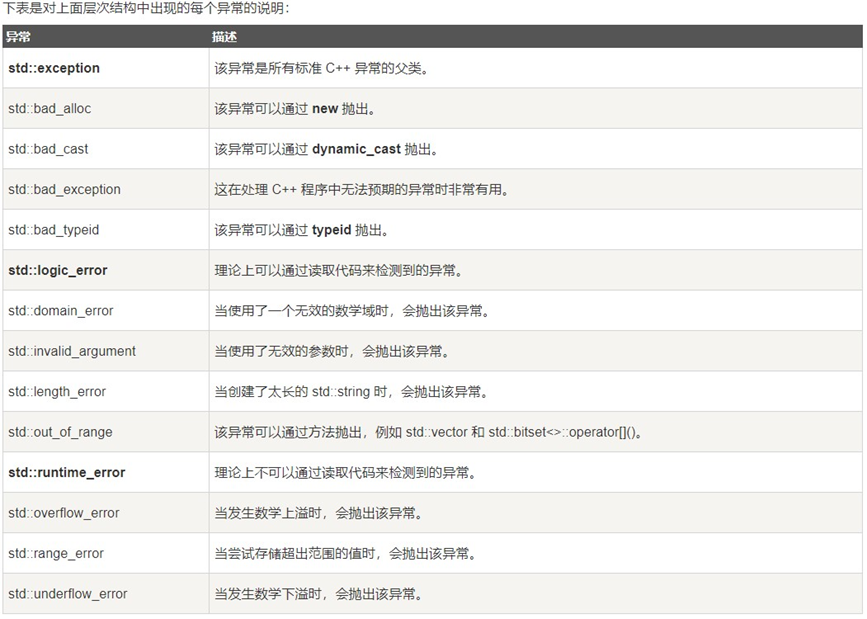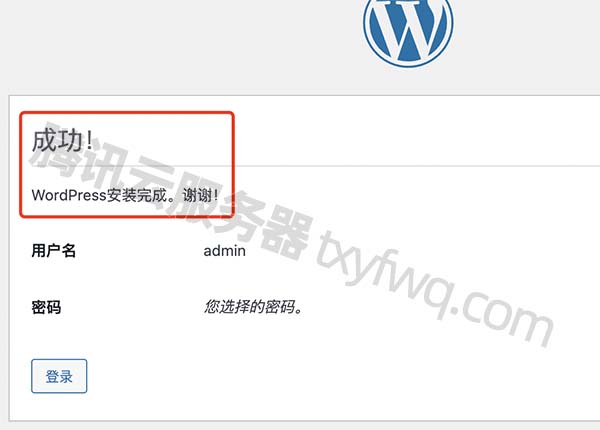前言: Java函数式编程,是一种强大的编程范式,能够让你的代码更加简洁,优雅。Java 8 引入了函数式编程的支持,其中Lambda表达式和函数式接口是函数式编程的两个重要概念。在本篇文章中,我们将会详细介绍Java函数式编程以及常用的函数式接口。
文章目录
- Lambda表达式
- 函数式接口
- Function 函数映射
- 源码
- Consumer 消费型接口
- 源码
- Predicate 断言型接口
- 源码
- Supplier 供给型接口
- 源码
- 方法引用
- 其他函数式接口
- Bi类型接口
- 操作基本数据类型的接口
- 总结
Lambda表达式
Lambda表达式是一种匿名函数,可以理解为一段可以传递的代码。在 Java 中,Lambda 表达式可以替代只有一个抽象方法的接口。下面是一个Lambda表达式的例子:
java">() -> System.out.println("Hello World")
其中,左侧括号内是Lambda表达式的参数列表(如果没有参数,则为空),箭头“->”将 Lambda 表达式的参数列表和表达式主体分隔开,右侧则是Lambda表达式的主体(也就是Lambda表达式要执行的代码块)。Lambda表达式是使用编写函数式接口的简便方法。
函数式接口
函数式接口是指仅包含一个抽象方法的接口。在 Java 中,函数式接口可以使用Lambda表达式来实现,从而实现函数式编程。Java提供了一些常用的函数式接口,如Function、Consumer、Predicate、Supplier等。
按照下面的格式定义,你也能写出函数式接口:
java"> @FunctionalInterface
修饰符 interface 接口名称 {
返回值类型 方法名称(可选参数信息);
// 其他非抽象方法内容
}
虽然@FunctionalInterface注解不是必须的,但是自定义函数式接口最好还是都加上,一是养成良好的编程习惯,二是防止他人修改,一看到这个注解就知道是函数式接口,避免他人往接口内添加抽象方法造成不必要的麻烦。
java">@FunctionalInterface
public interface MyFunction {
void print(String s);
}
上面我自定义的一个函数式接口,那么这个接口的作用是什么呢?就是输出一串字符串,属于消费型接口,是模仿Consumer接口写的,只不过这个没有使用泛型,而是将参数具体类型化了,不知道Consumer没关系,下面会介绍到,其实java8中提供了很多常用的函数式接口,Consumer就是其中之一,一般情况下都不需要自己定义,直接使用就好了。那么怎么使用这个自定义的函数式接口呢?我们可以用函数式接口作为参数,调用时传递Lambda表达式。如果一个方法的参数是Lambda,那么这个参数的类型一定是函数式接口。例如:
java">public class MyFunctionTest {
public static void main(String[] args) {
String text = "试试自定义函数好使不";
printString(text, System.out::print);
}
private static void printString(String text, MyFunction myFunction) {
myFunction.print(text);
}
}
执行以后就会输出“试试自定义函数好使不”这句话,如果某天需求变了,我不想输出这句话了,想输出别的,那么直接替换text就好了。函数式编程是没有副作用的,最大的好处就是函数的内部是无状态的,既输入确定输出就确定。函数式编程还有更多好玩的套路,这就需要靠大家自己探索了。
Function 函数映射
抽象方法: R apply(T t),传入一个参数,返回想要的结果。
java">public interface Function<T, R> {
R apply(T t);
}
Function接口接受一个参数并返回结果。我们可以使用andThen方法来将多个函数串联起来,进行组合操作。示例代码:
java">Function<Integer, String> intToString = Object::toString;
Function<String, String> quote = s -> "'" + s + "'";
Function<Integer, String> quoteIntToString = intToString.andThen(quote);
String result = quoteIntToString.apply(123);
System.out.println(result);
默认方法:
compose(Function before),先执行compose方法参数before中的apply方法,然后将执行结果传递给调用compose函数中的apply方法在执行。
使用方式:
java"> Function<Integer, Integer> function1 = e -> e * 2;
Function<Integer, Integer> function2 = e -> e * e;
Integer apply2 = function1.compose(function2).apply(3);
System.out.println(apply2);
还是举一个乘法的例子,compose方法执行流程是先执行function2的表达式也就是33=9,然后在将执行结果传给function1的表达式也就是92=18,所以最终的结果是18。
andThen(Function after),先执行调用andThen函数的apply方法,然后在将执行结果传递给andThen方法after参数中的apply方法在执行。它和compose方法整好是相反的执行顺序。
使用方式:
java"> Function<Integer, Integer> function1 = e -> e * 2;
Function<Integer, Integer> function2 = e -> e * e;
Integer apply3 = function1.andThen(function2).apply(3);
System.out.println(apply3);
这里我们和compose方法使用一个例子,所以是一模一样的例子,由于方法的不同,执行顺序也就不相同,那么结果是大大不同的。andThen方法是先执行function1表达式,也就是32=6,然后在执行function2表达式也就是66=36。结果就是36。
**静态方法:**identity(),获取一个输入参数和返回结果相同的Function实例。
使用方式:
Function<Integer, Integer> identity = Function.identity();
Integer apply = identity.apply(3);
System.out.println(apply);
平常没有遇到过使用这个方法的场景,总之这个方法的作用就是输入什么返回结果就是什么。
源码
::: details
java">/*
* Copyright (c) 2010, 2013, Oracle and/or its affiliates. All rights reserved.
* DO NOT ALTER OR REMOVE COPYRIGHT NOTICES OR THIS FILE HEADER.
*
* This code is free software; you can redistribute it and/or modify it
* under the terms of the GNU General Public License version 2 only, as
* published by the Free Software Foundation. Oracle designates this
* particular file as subject to the "Classpath" exception as provided
* by Oracle in the LICENSE file that accompanied this code.
*
* This code is distributed in the hope that it will be useful, but WITHOUT
* ANY WARRANTY; without even the implied warranty of MERCHANTABILITY or
* FITNESS FOR A PARTICULAR PURPOSE. See the GNU General Public License
* version 2 for more details (a copy is included in the LICENSE file that
* accompanied this code).
*
* You should have received a copy of the GNU General Public License version
* 2 along with this work; if not, write to the Free Software Foundation,
* Inc., 51 Franklin St, Fifth Floor, Boston, MA 02110-1301 USA.
*
* Please contact Oracle, 500 Oracle Parkway, Redwood Shores, CA 94065 USA
* or visit www.oracle.com if you need additional information or have any
* questions.
*/
package java.util.function;
import java.util.Objects;
/**
* Represents a function that accepts one argument and produces a result.
*
* <p>This is a <a href="package-summary.html">functional interface</a>
* whose functional method is {@link #apply(Object)}.
*
* @param <T> the type of the input to the function
* @param <R> the type of the result of the function
*
* @since 1.8
*/
@FunctionalInterface
public interface Function<T, R> {
/**
* Applies this function to the given argument.
*
* @param t the function argument
* @return the function result
*/
R apply(T t);
/**
* Returns a composed function that first applies the {@code before}
* function to its input, and then applies this function to the result.
* If evaluation of either function throws an exception, it is relayed to
* the caller of the composed function.
*
* @param <V> the type of input to the {@code before} function, and to the
* composed function
* @param before the function to apply before this function is applied
* @return a composed function that first applies the {@code before}
* function and then applies this function
* @throws NullPointerException if before is null
*
* @see #andThen(Function)
*/
default <V> Function<V, R> compose(Function<? super V, ? extends T> before) {
Objects.requireNonNull(before);
return (V v) -> apply(before.apply(v));
}
/**
* Returns a composed function that first applies this function to
* its input, and then applies the {@code after} function to the result.
* If evaluation of either function throws an exception, it is relayed to
* the caller of the composed function.
*
* @param <V> the type of output of the {@code after} function, and of the
* composed function
* @param after the function to apply after this function is applied
* @return a composed function that first applies this function and then
* applies the {@code after} function
* @throws NullPointerException if after is null
*
* @see #compose(Function)
*/
default <V> Function<T, V> andThen(Function<? super R, ? extends V> after) {
Objects.requireNonNull(after);
return (T t) -> after.apply(apply(t));
}
/**
* Returns a function that always returns its input argument.
*
* @param <T> the type of the input and output objects to the function
* @return a function that always returns its input argument
*/
static <T> Function<T, T> identity() {
return t -> t;
}
}
:::
Consumer 消费型接口
抽象方法: void accept(T t),接收一个参数进行消费,但无需返回结果。
java">public interface Consumer<T> {
void accept(T t);
}
Consumer接口接受一个参数,但没有返回值。我们可以使用andThen方法来将多个Consumer组合起来,进行链式操作。示例代码:
java">List<String> list = Arrays.asList("a", "b", "c");
Consumer<String> print = System.out::print;
Consumer<String> println = System.out::println;
list.forEach(print.andThen(println));
源码
::: details
java">@FunctionalInterface
public interface Consumer<T> {
/**
* Performs this operation on the given argument.
*
* @param t the input argument
*/
void accept(T t);
/**
* Returns a composed {@code Consumer} that performs, in sequence, this
* operation followed by the {@code after} operation. If performing either
* operation throws an exception, it is relayed to the caller of the
* composed operation. If performing this operation throws an exception,
* the {@code after} operation will not be performed.
*
* @param after the operation to perform after this operation
* @return a composed {@code Consumer} that performs in sequence this
* operation followed by the {@code after} operation
* @throws NullPointerException if {@code after} is null
*/
default Consumer<T> andThen(Consumer<? super T> after) {
Objects.requireNonNull(after);
return (T t) -> { accept(t); after.accept(t); };
}
}
:::
Predicate 断言型接口
抽象方法: boolean test(T t),传入一个参数,返回一个布尔值。
java">public interface Predicate<T> {
boolean test(T t);
}
Predicate接口接受一个参数,返回一个布尔值。我们可以使用and、or、negate方法将多个Predicate组合起来,进行复合逻辑的判断。示例代码:
java">List<String> list = Arrays.asList("cat", "dog", "bird", "lion", "tiger");
Predicate<String> startsWithC = s -> s.startsWith("c");
Predicate<String> endsWithR = s -> s.endsWith("r");
Predicate<String> containsO = s -> s.contains("o");
list.stream()
.filter(startsWithC.and(endsWithR).or(containsO))
.forEach(System.out::println);
源码
::: details
java">/*
* Copyright (c) 2010, 2013, Oracle and/or its affiliates. All rights reserved.
* DO NOT ALTER OR REMOVE COPYRIGHT NOTICES OR THIS FILE HEADER.
*
* This code is free software; you can redistribute it and/or modify it
* under the terms of the GNU General Public License version 2 only, as
* published by the Free Software Foundation. Oracle designates this
* particular file as subject to the "Classpath" exception as provided
* by Oracle in the LICENSE file that accompanied this code.
*
* This code is distributed in the hope that it will be useful, but WITHOUT
* ANY WARRANTY; without even the implied warranty of MERCHANTABILITY or
* FITNESS FOR A PARTICULAR PURPOSE. See the GNU General Public License
* version 2 for more details (a copy is included in the LICENSE file that
* accompanied this code).
*
* You should have received a copy of the GNU General Public License version
* 2 along with this work; if not, write to the Free Software Foundation,
* Inc., 51 Franklin St, Fifth Floor, Boston, MA 02110-1301 USA.
*
* Please contact Oracle, 500 Oracle Parkway, Redwood Shores, CA 94065 USA
* or visit www.oracle.com if you need additional information or have any
* questions.
*/
package java.util.function;
import java.util.Objects;
/**
* Represents a predicate (boolean-valued function) of one argument.
*
* <p>This is a <a href="package-summary.html">functional interface</a>
* whose functional method is {@link #test(Object)}.
*
* @param <T> the type of the input to the predicate
*
* @since 1.8
*/
@FunctionalInterface
public interface Predicate<T> {
/**
* Evaluates this predicate on the given argument.
*
* @param t the input argument
* @return {@code true} if the input argument matches the predicate,
* otherwise {@code false}
*/
boolean test(T t);
/**
* Returns a composed predicate that represents a short-circuiting logical
* AND of this predicate and another. When evaluating the composed
* predicate, if this predicate is {@code false}, then the {@code other}
* predicate is not evaluated.
*
* <p>Any exceptions thrown during evaluation of either predicate are relayed
* to the caller; if evaluation of this predicate throws an exception, the
* {@code other} predicate will not be evaluated.
*
* @param other a predicate that will be logically-ANDed with this
* predicate
* @return a composed predicate that represents the short-circuiting logical
* AND of this predicate and the {@code other} predicate
* @throws NullPointerException if other is null
*/
default Predicate<T> and(Predicate<? super T> other) {
Objects.requireNonNull(other);
return (t) -> test(t) && other.test(t);
}
/**
* Returns a predicate that represents the logical negation of this
* predicate.
*
* @return a predicate that represents the logical negation of this
* predicate
*/
default Predicate<T> negate() {
return (t) -> !test(t);
}
/**
* Returns a composed predicate that represents a short-circuiting logical
* OR of this predicate and another. When evaluating the composed
* predicate, if this predicate is {@code true}, then the {@code other}
* predicate is not evaluated.
*
* <p>Any exceptions thrown during evaluation of either predicate are relayed
* to the caller; if evaluation of this predicate throws an exception, the
* {@code other} predicate will not be evaluated.
*
* @param other a predicate that will be logically-ORed with this
* predicate
* @return a composed predicate that represents the short-circuiting logical
* OR of this predicate and the {@code other} predicate
* @throws NullPointerException if other is null
*/
default Predicate<T> or(Predicate<? super T> other) {
Objects.requireNonNull(other);
return (t) -> test(t) || other.test(t);
}
/**
* Returns a predicate that tests if two arguments are equal according
* to {@link Objects#equals(Object, Object)}.
*
* @param <T> the type of arguments to the predicate
* @param targetRef the object reference with which to compare for equality,
* which may be {@code null}
* @return a predicate that tests if two arguments are equal according
* to {@link Objects#equals(Object, Object)}
*/
static <T> Predicate<T> isEqual(Object targetRef) {
return (null == targetRef)
? Objects::isNull
: object -> targetRef.equals(object);
}
}
:::
Supplier 供给型接口
**抽象方法:**T get(),无参数,有返回值。
java">public interface Supplier<T> {
T get();
}
Supplier接口不接受任何参数,返回一个结果。我们可以使用get方法来获取结果。示例代码:
java">Supplier<String> helloSupplier = () -> "Hello";
System.out.println(helloSupplier.get() + " world");
源码
::: details
java">/*
* Copyright (c) 2012, 2013, Oracle and/or its affiliates. All rights reserved.
* DO NOT ALTER OR REMOVE COPYRIGHT NOTICES OR THIS FILE HEADER.
*
* This code is free software; you can redistribute it and/or modify it
* under the terms of the GNU General Public License version 2 only, as
* published by the Free Software Foundation. Oracle designates this
* particular file as subject to the "Classpath" exception as provided
* by Oracle in the LICENSE file that accompanied this code.
*
* This code is distributed in the hope that it will be useful, but WITHOUT
* ANY WARRANTY; without even the implied warranty of MERCHANTABILITY or
* FITNESS FOR A PARTICULAR PURPOSE. See the GNU General Public License
* version 2 for more details (a copy is included in the LICENSE file that
* accompanied this code).
*
* You should have received a copy of the GNU General Public License version
* 2 along with this work; if not, write to the Free Software Foundation,
* Inc., 51 Franklin St, Fifth Floor, Boston, MA 02110-1301 USA.
*
* Please contact Oracle, 500 Oracle Parkway, Redwood Shores, CA 94065 USA
* or visit www.oracle.com if you need additional information or have any
* questions.
*/
package java.util.function;
/**
* Represents a supplier of results.
*
* <p>There is no requirement that a new or distinct result be returned each
* time the supplier is invoked.
*
* <p>This is a <a href="package-summary.html">functional interface</a>
* whose functional method is {@link #get()}.
*
* @param <T> the type of results supplied by this supplier
*
* @since 1.8
*/
@FunctionalInterface
public interface Supplier<T> {
/**
* Gets a result.
*
* @return a result
*/
T get();
}
:::
方法引用
方法引用是一种更简洁的Lambda表达式,可以通过方法名称来引用已经存在的方法。方法引用通过 :: 操作符将方法名与对象或类名分隔开来表示。
下面是一些方法引用的例子:
java">Function<String, Integer> strToInt = Integer::parseInt;
Supplier<Date> newDate = Date::new;
Consumer<String> print = System.out::print;
其他函数式接口
Bi类型接口
BiConsumer、BiFunction、BiPrediate 是 Consumer、Function、Predicate 的扩展,可以传入多个参数,没有 BiSupplier 是因为 Supplier 没有入参。
操作基本数据类型的接口
IntConsumer、IntFunction、IntPredicate、IntSupplier、LongConsumer、LongFunction、LongPredicate、LongSupplier、DoubleConsumer、DoubleFunction、DoublePredicate、DoubleSupplier。其实常用的函数式接口就那四大接口Consumer、Function、Prediate、Supplier,其他的函数式接口就不一一列举了,有兴趣的可以去java.util.function这个包下详细的看。
总结
在本篇文章中,我们介绍了Java函数式编程以及常用的函数式接口。Lambda表达式和函数式接口是函数式编程的两个重要概念,可以让代码更加简洁和灵活。Java提供了一些常用的函数式接口,如Function、Consumer、Predicate、Supplier等,可以通过方法引用更加简洁地实现函数式编程。使用函数式编程,可以让你的代码更加优雅,简洁。





